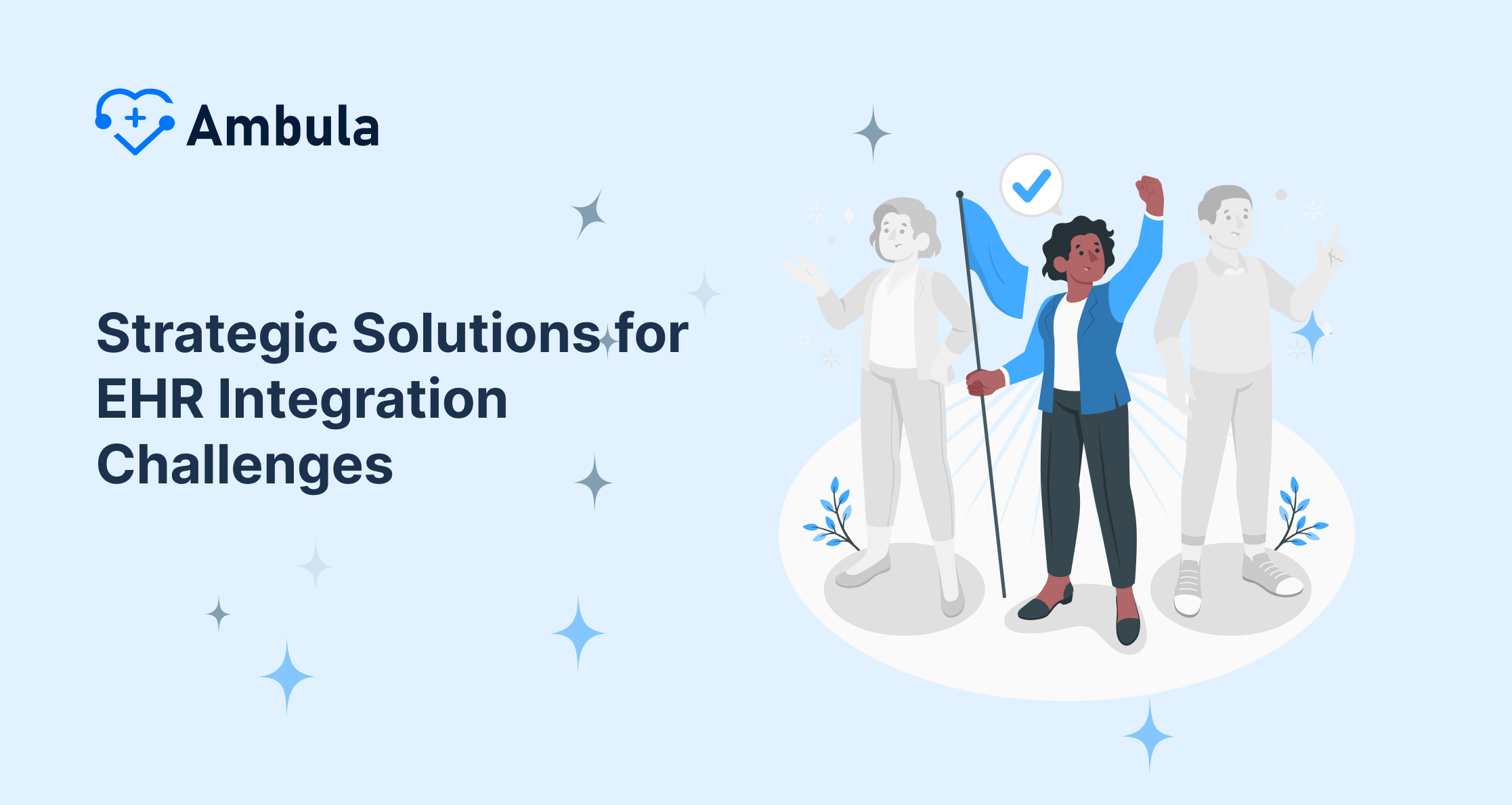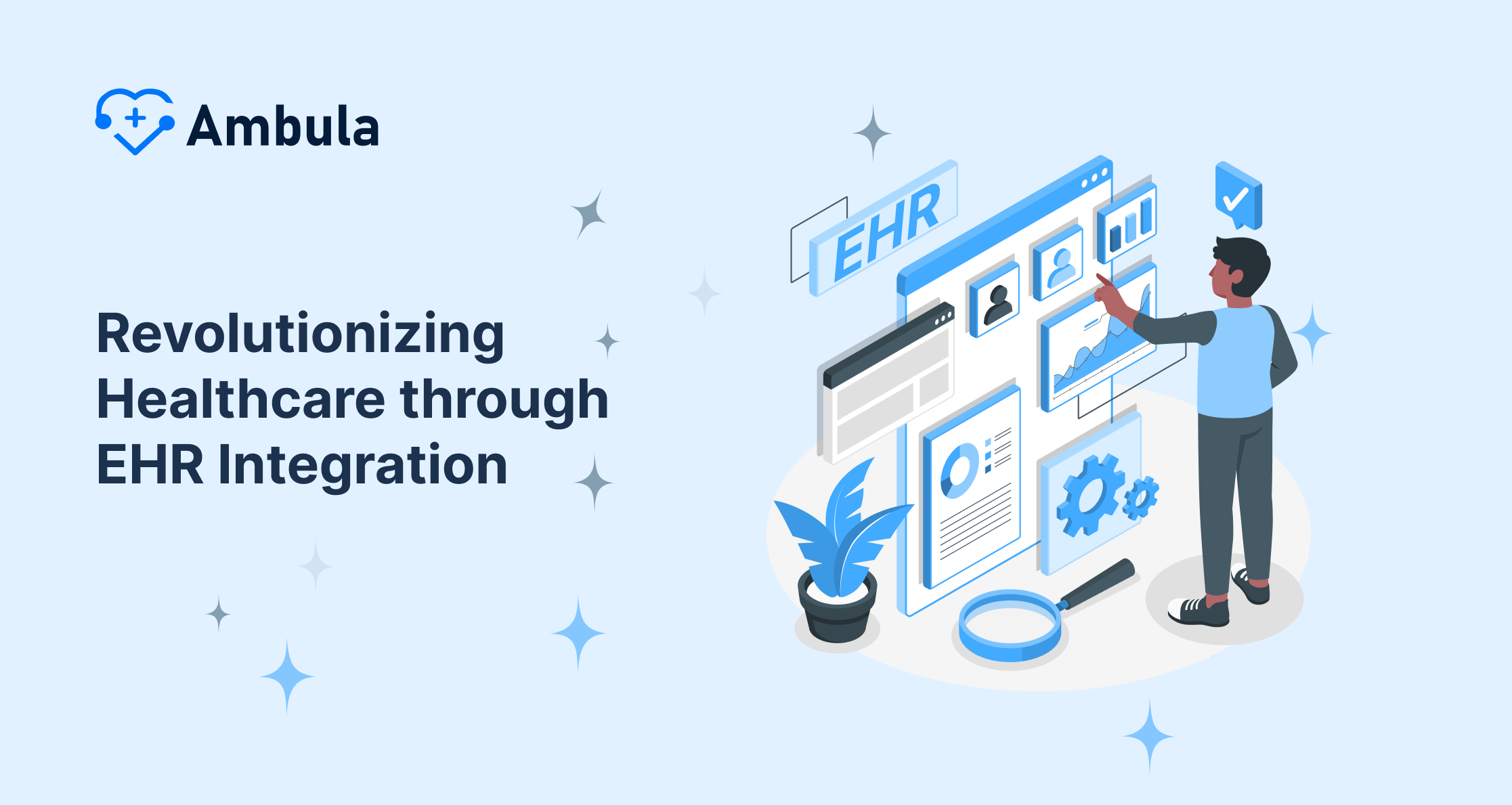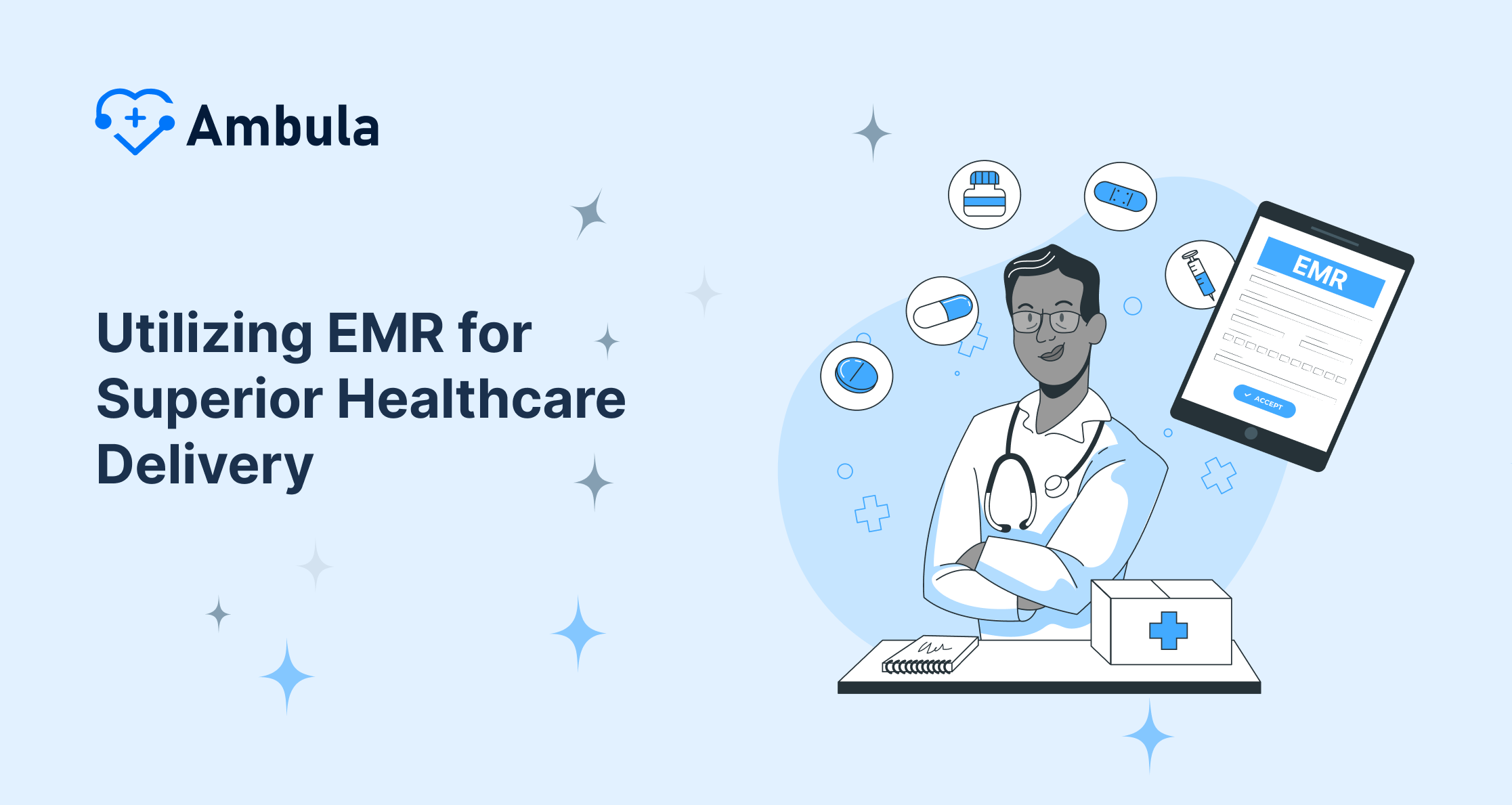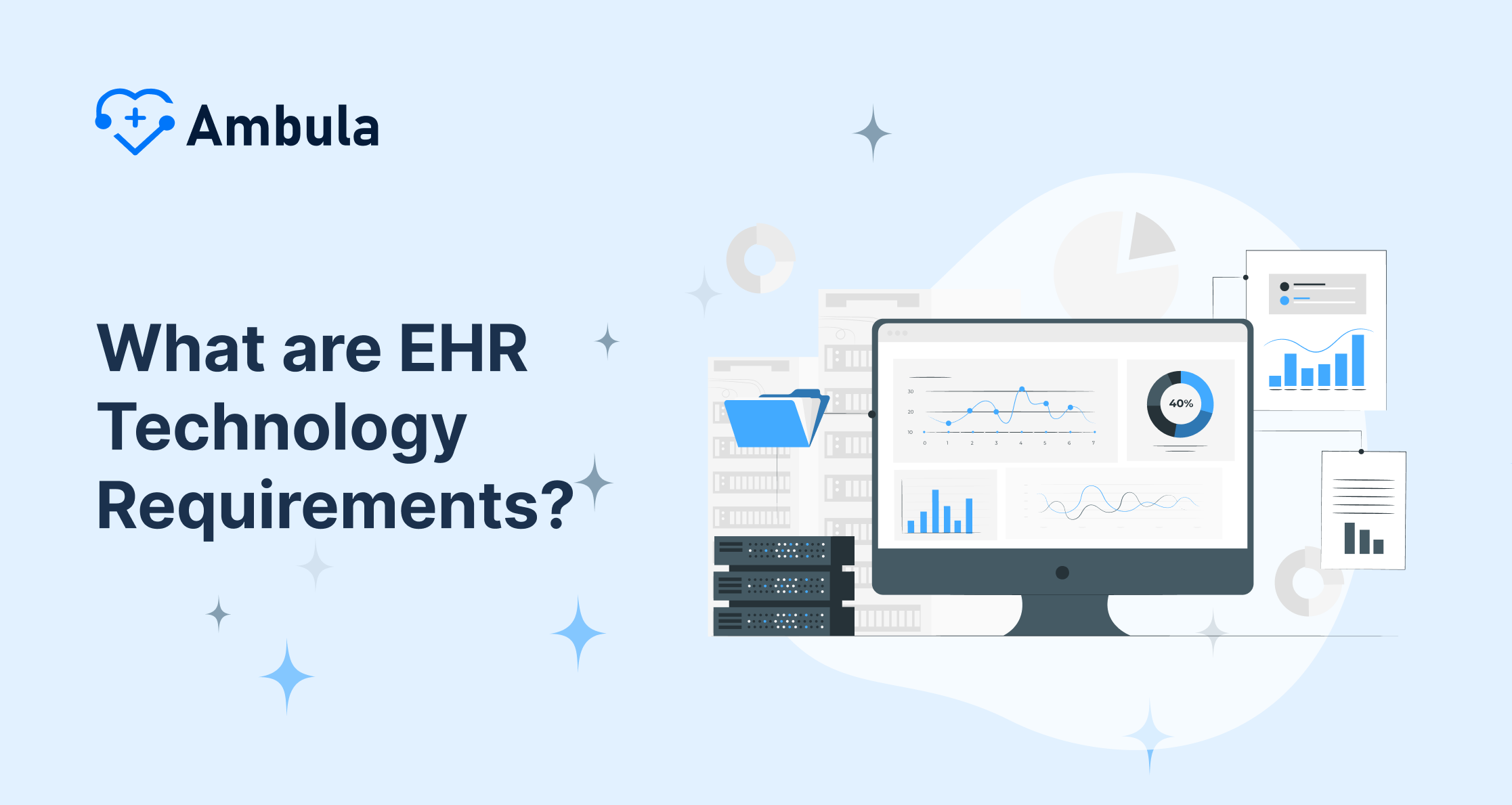In the rapidly evolving landscape of healthcare, the seamless integration of Electronic Health Records (EHRs) has emerged as a pivotal catalyst for transforming patient care, streamlining operations, and fostering data-driven decision-making. As the global economic health records market surges towards an estimated $39.38 billion by 2032, healthcare organizations are recognizing the immense potential of harnessing the wealth of patient data encapsulated within EHRs.
Understanding EHR Integration: A Cornerstone of Healthcare Transformation
At its core, EHR integration refers to the intricate process of enabling medical records to be accessed and shared across various electronic software solutions and platforms. This interconnectivity empowers healthcare providers with a comprehensive, centralized repository of patient information, encompassing personal details, medical histories, treatment plans, and clinical data.
By breaking down data silos and facilitating the seamless exchange of information, EHR integration serves as a powerful enabler for enhanced patient care, operational efficiency, and data-driven insights. It equips healthcare professionals with real-time access to critical patient data, fostering informed decision-making and personalized treatment strategies.
Unlocking the Transformative Benefits of EHR Integration
The integration of EHRs into healthcare operations unleashes a myriad of transformative benefits that resonate across multiple facets of the healthcare ecosystem:
1. Streamlining Clinical Workflows
EHR integration automates and streamlines clinical workflows, minimizing redundancies and eliminating the need for duplicative data entry. By consolidating patient information into a centralized platform, healthcare providers can seamlessly access and update records, enhancing collaboration and coordination among care teams.
2. Enhancing Patient Safety and Quality of Care
With integrated EHRs, healthcare professionals gain access to a comprehensive, up-to-date view of a patient’s medical history, allergies, medications, and test results. This holistic perspective empowers providers to make well-informed decisions, reduce the risk of medical errors, and deliver evidence-based, personalized care tailored to each patient’s unique needs.
3. Fostering Interoperability and Collaboration
EHR integration facilitates the seamless exchange of patient data across various healthcare organizations and systems, fostering interoperability and enabling collaborative care. This interconnectivity ensures that patients receive consistent, coordinated treatment, regardless of the healthcare provider or facility they visit.
4. Empowering Patient Engagement
Integrated EHR systems promote patient engagement by providing individuals with access to their own health records, enabling them to actively participate in their care journey. Patients can review test results, treatment plans, and medication information, fostering a sense of empowerment and facilitating informed decision-making.
5. Driving Operational Efficiency and Cost Savings
By eliminating redundant data entry, minimizing administrative burdens, and streamlining workflows, EHR integration contributes to significant operational efficiencies and cost savings for healthcare organizations. Automated processes and real-time data access enable healthcare professionals to focus on delivering high-quality care, rather than grappling with administrative tasks.
6. Unlocking Data-Driven Insights
The wealth of patient data captured within integrated EHRs serves as a valuable resource for advanced analytics and reporting capabilities. Healthcare organizations can leverage these insights to identify patterns, monitor population health trends, and implement data-driven strategies to enhance patient outcomes, optimize resource allocation, and drive continuous improvement.
 Overcoming EHR Integration Challenges: A Strategic Approach
Overcoming EHR Integration Challenges: A Strategic Approach
While the benefits of EHR integration are undeniable, the journey towards successful implementation is not without its challenges. Healthcare organizations must proactively address and mitigate potential obstacles to ensure a seamless transition and maximize the return on their investment.
1. System Compatibility and Interoperability
One of the most significant challenges in EHR integration lies in ensuring compatibility and interoperability among various healthcare systems and applications. To overcome this hurdle, organizations must carefully assess their current infrastructure, identify potential compatibility issues, and implement robust integration solutions that adhere to industry standards and protocols.
2. Data Privacy and Security Concerns
The healthcare industry is subject to stringent data privacy and security regulations, such as the Health Insurance Portability and Accountability Act (HIPAA). EHR integration initiatives must prioritize data protection measures, including robust encryption, access controls, and secure authentication protocols, to safeguard sensitive patient information and maintain compliance.
3. Change Management and Staff Adoption
Introducing new technologies and processes can often face resistance from staff accustomed to existing workflows. Effective change management strategies, comprehensive training programs, and clear communication are essential to facilitate seamless staff adoption and ensure the successful utilization of integrated EHR systems.
4. Data Migration and Quality Assurance
The migration of historical patient data from legacy systems or paper records to integrated EHR platforms requires meticulous planning and execution. Healthcare organizations must implement rigorous data quality assurance measures to ensure the accuracy, integrity, and consistency of migrated data, minimizing the risk of errors or discrepancies.
5. Financial Considerations and Return on Investment
EHR integration initiatives can involve significant upfront costs, including software licenses, hardware upgrades, data migration expenses, and ongoing maintenance fees. Healthcare organizations must carefully evaluate the financial implications and develop a comprehensive strategy to maximize the return on investment (ROI) and justify the allocation of resources.
Embracing Best Practices for Successful EHR Integration
To navigate the complexities of EHR integration and unlock its full potential, healthcare organizations should adopt a comprehensive approach guided by industry best practices:
1. Establish Clear Objectives and Requirements
Before embarking on an EHR integration journey, healthcare organizations should clearly define their objectives, identify specific requirements, and align the initiative with their overall strategic goals. This foundational step ensures that the selected EHR solution and integration approach align with the organization’s unique needs and priorities.
2. Conduct Thorough System Assessments
A comprehensive assessment of existing healthcare systems, infrastructure, and workflows is crucial to identify potential compatibility issues, data migration challenges, and areas requiring upgrades or modifications. This evaluation enables organizations to develop a tailored integration plan and allocate resources effectively.
3. Engage Stakeholders and Foster Collaboration
EHR integration initiatives involve multiple stakeholders, including healthcare professionals, IT teams, administrators, and patients. Fostering collaboration and open communication among these stakeholders is essential for ensuring a smooth transition, addressing concerns, and gathering valuable insights throughout the implementation process.
4. Prioritize Data Quality and Governance
Data quality and governance should be at the forefront of any EHR integration strategy. Organizations should establish robust data management practices, implement data validation mechanisms, and develop clear policies and procedures for data ownership, access, and sharing across integrated systems.
5. Invest in Training and Continuous Support
Comprehensive training programs and ongoing support are critical for ensuring successful staff adoption and maximizing the potential of integrated EHR systems. Healthcare organizations should allocate resources for user training, provide accessible documentation and support channels, and encourage open communication to address any concerns or challenges that may arise.
6. Continuously Monitor and Optimize
EHR integration is an iterative process that requires continuous monitoring, evaluation, and optimization. Healthcare organizations should establish performance metrics, gather feedback from users, and leverage data analytics to identify areas for improvement. This proactive approach ensures that the integrated EHR system remains aligned with evolving organizational needs and technological advancements.
Navigating the EHR Integration Landscape: Trusted Solutions and Providers
As healthcare organizations embark on their EHR integration journey, they can leverage the expertise and solutions offered by trusted providers in the industry. These providers offer a range of comprehensive solutions tailored to meet the unique needs of healthcare organizations, ensuring seamless integration, data security, and optimal performance.
1. Arcadia
Arcadia is a leading name in the healthcare IT and analytics industry, renowned for its cutting-edge solutions that empower healthcare organizations to achieve optimal care management, address health equity, and drive advanced risk adjustment outcomes. Arcadia’s Desktop application seamlessly integrates with various EHR systems, aggregating and curating high-quality, up-to-date patient data through an EHR-agnostic, self-service installation process that can be completed in as little as two weeks.
2. Vim
Vim’s point-of-care connection platform enhances the provider experience by collecting data, integrating it with EHR workflows, and digitizing manual tasks. Built to be flexible with data ingestion, Vim’s integration technology can swiftly partner with existing data platforms, empowering healthcare providers and advancing interoperability across the healthcare ecosystem.
3. PatientIQ
PatientIQ is designed to seamlessly integrate with existing EHR systems, enabling healthcare organizations to push and pull patient data, synchronize tasks, and promote the interoperability of clinical data. With extensive experience working with various EHR vendors, PatientIQ’s platform is tailored to alleviate administrative burdens and optimize clinical workflows.
4. Innovaccer
Backed by industry leaders like KLAS Research and Black Book sources, Innovaccer’s Health Cloud solution empowers healthcare organizations to drive digital transformation and accelerate innovation across payer and provider levels. Innovaccer’s data activation platform, developer portal, and intelligent application suite enhance care quality and elevate the patient experience.
5. Health Catalyst
Health Catalyst stands out as a KLAS Research high-performance scorer, offering end-to-end technology integration, self-service data science and reporting, and expert services to curate healthcare data and build actionable analytics. With a focus on achieving measurable clinical, operational, and financial improvements, Health Catalyst leverages its wide array of service offerings to drive quality care.
6. Redox
Redox’s revolutionary approach to healthcare integration involves providing a composable healthcare solution through a single API, connecting products, payers, and providers. Redox empowers product teams and developers with differentiated growth strategies and high-impact developer tools by freeing healthcare organizations from integration hassles.
7. Folio3
Folio3 minimizes integration barriers by consolidating different EHR systems and their aging infrastructure, eliminating data silos, and ensuring seamless integration with third-party platforms and applications. Folio3’s EHR systems leverage advanced machine learning, predictive analysis, and artificial intelligence to convert data into actionable insights while offering training programs to help organizations understand their data structure.
Embracing the Future of Healthcare: The Evolving Landscape of EHR Integration
As the healthcare industry continues to evolve, the role of EHR integration will become increasingly pivotal in shaping the future of patient care and healthcare delivery. Several exciting trends and advancements are on the horizon, promising to further enhance the capabilities and impact of integrated EHR systems:
1. Improved Interoperability Standards
The push for better healthcare interoperability is driving the development and adoption of more robust standards, enabling seamless data exchange across diverse systems and platforms. Initiatives like the Fast Healthcare Interoperability Resources (FHIR) standard are paving the way for enhanced interoperability and data portability.
2. Proliferation of Application Programming Interfaces (APIs)
APIs play a central role in facilitating EHR integration, enabling different systems and applications to communicate and exchange data seamlessly. The growing adoption of APIs in healthcare is expected to accelerate, fostering greater connectivity and enabling innovative solutions that leverage integrated patient data.
3. Cloud-Based EHR Platforms
Cloud computing is revolutionizing the healthcare industry, and cloud-based EHR platforms are gaining significant traction. These platforms offer scalability, accessibility, and enhanced data security while enabling seamless integration and collaboration across healthcare organizations and systems.
4. Mobile Integration and Enhanced Patient Involvement
With the ubiquity of smartphones and mobile devices, the integration of EHRs with mobile technologies is becoming increasingly important. This integration empowers patients to access their health records, communicate with healthcare providers, and actively participate in their care journey, fostering greater engagement and self-management.
5. Artificial Intelligence (AI) and Predictive Analytics Integration
Integrating AI and predictive analytics into EHR systems holds immense potential for transforming healthcare delivery. By leveraging machine learning algorithms and advanced analytics, EHR systems can provide intelligent recommendations, identify risk factors, and support evidence-based decision-making, ultimately improving patient outcomes and resource allocation.
6. Blockchain for Data Security and Transparency
Blockchain technology is emerging as a promising solution for enhancing data security and transparency in the healthcare industry. By leveraging decentralized and immutable ledgers, blockchain can ensure the integrity and auditability of patient data while facilitating secure data sharing and enabling new healthcare delivery models.
As the healthcare industry continues to embrace digital transformation and data-driven approaches, the seamless integration of EHRs will play a pivotal role in shaping the future of patient care, fostering collaboration, and driving innovation. By staying ahead of these trends and adopting best practices, healthcare organizations can position themselves at the forefront of this revolution, delivering exceptional care and improving patients’ lives worldwide.
Introducing Ambula: Revolutionizing Healthcare with Seamless EHR Integration
At the forefront of healthcare innovation, Ambula stands as a pioneering solution, offering seamless EHR integration and empowering healthcare organizations to unlock the full potential of their patient data. Ambula’s cutting-edge platform seamlessly integrates with various EHR systems, providing a centralized repository for patient information, medical histories, treatment plans, and clinical data.
With Ambula, healthcare professionals can access real-time, comprehensive patient records, enabling informed decision-making and personalized care strategies. The platform’s advanced analytics capabilities transform raw data into actionable insights, empowering organizations to identify patterns, monitor population health trends, and implement data-driven strategies to enhance patient outcomes.
Ambula’s commitment to data security and privacy is unwavering, with robust encryption, access controls, and secure authentication protocols in place to safeguard sensitive patient information and maintain compliance with industry regulations.
By partnering with Ambula, healthcare organizations can streamline clinical workflows, foster interoperability and collaboration, empower patient engagement, and drive operational efficiency and cost savings. With a dedicated team of experts and a customer-centric approach, Ambula provides comprehensive training, ongoing support, and continuous optimization to ensure successful EHR integration and long-term success.





